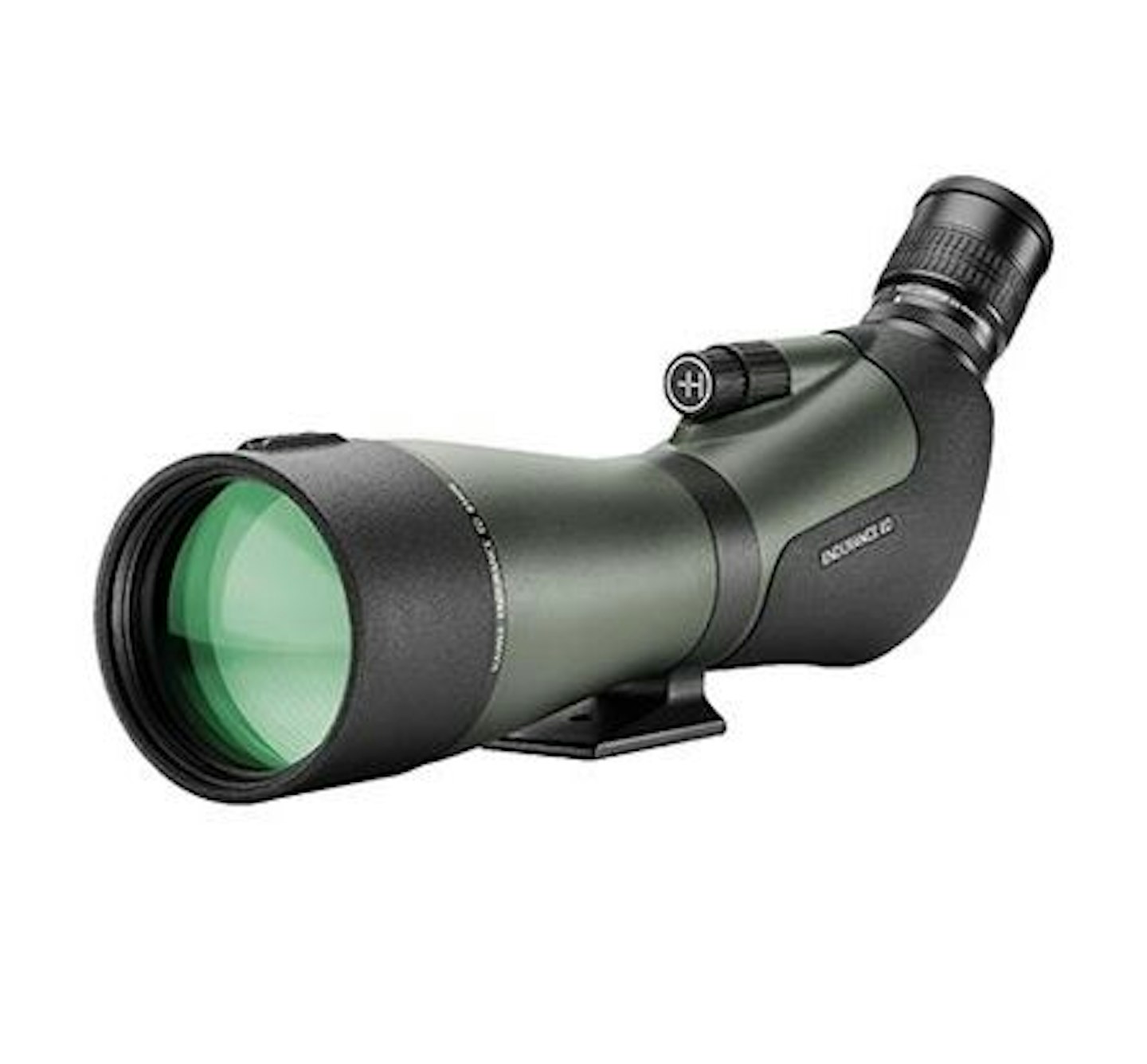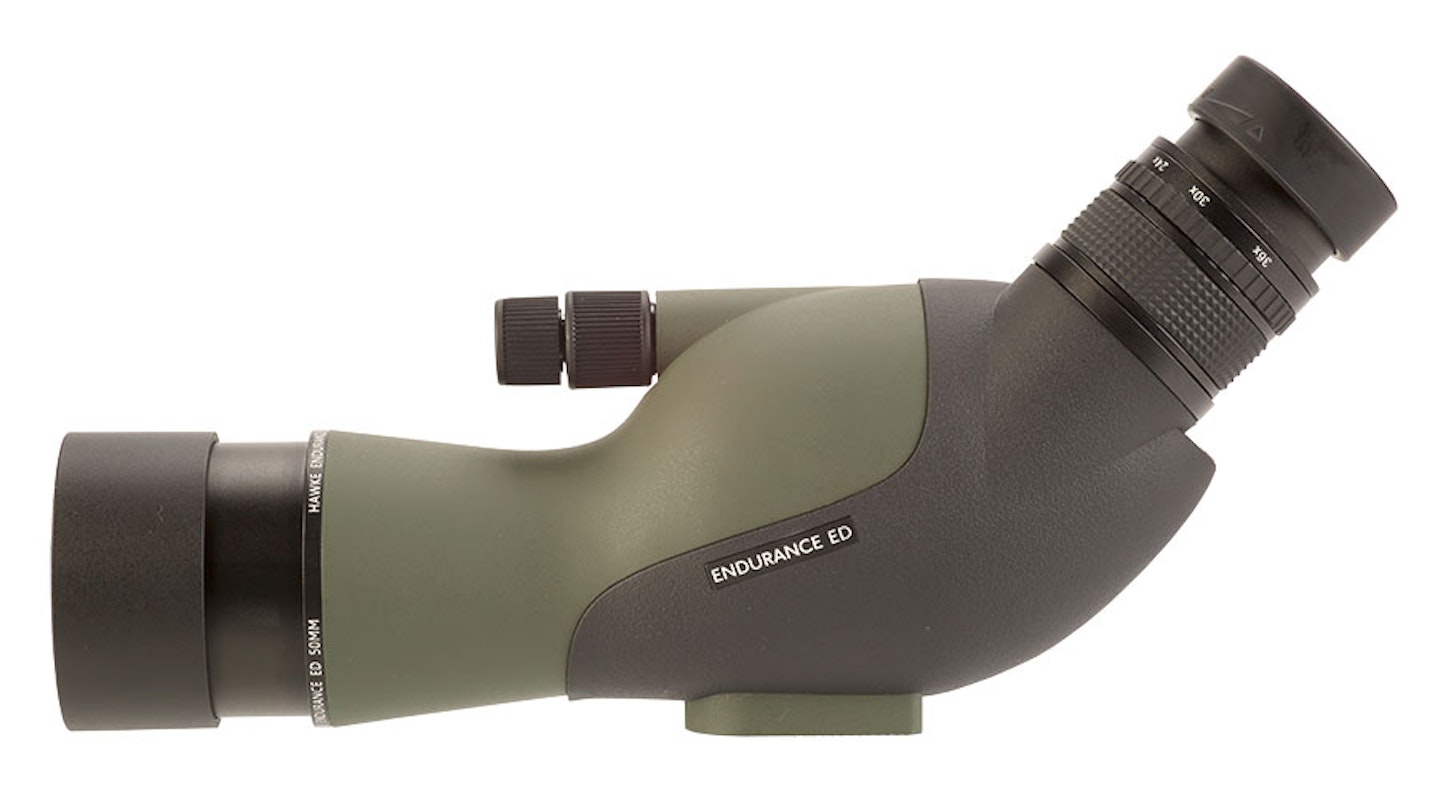Verdict
If you want a bit more reach than your bins provide, but don’t fancy lugging a large scope around, this is a great option. Optical performance is more than adequate for most situations, and this is a scope that genuinely does fit in your pocket, if you’re birding around the world.
There are all sorts of reasons why you might prefer to use a very small, lightweight spotting scope, not least that it can make life a lot easier if you’re travelling by air. But there’s a balance
to be struck – lack of bulk is no good if the scope isn’t offering anything you can’t get from a good pair of bins.
So, I thoroughly enjoyed putting Hawke’s Endurance ED 50mm scope through its paces over several weeks.

On the first count, it scores very highly. It weighs just 745g with the 12x-36x eyepiece included, and it really is pretty dinky. I found it easy to stow it away in the main pockets or the inside pocket of my winter coat, or even the inside pocket of a fleece or soft-shell. That could save you some serious hand luggage space if you’re flying.
It’s a solidly put-together scope, though, with good rubber armouring and a robust feel all-round. There’s an extendable lens hood.
There’s a split focus wheel, with both the main section and the fine focus wheel being roughly a finger wide and well textured for grip.
They both turn moderately stiffly, with the main wheel taking 5.75 turns from close focus to infinity. There was a slight lumpiness to the movement, I thought, but in use in the field I found both wheels easy to use and to find focus with, so maybe that was more a case of me being picky back at the office.
Close focus, incidentally, is really very good. The quoted figure is 2.5m, but it actually felt a little less than that, so this is a good scope to have handy if you’re planning on doing a bit of bug-watching on your birding expeditions.
There are four distinct eyepiece positions, with a maximum of 15mm eye relief. In the field, the eyepiece held each position very well, and the hard rubber eyecup is really very comfortable in extended use.
So, what about the optics? First impressions are of a bright, sharp image, with good natural colours. At the lower magnifications (anything up to around 26x), the image also feels pretty wide – the sharpness goes very close to the edge and creates a spacious, roomy feel, perhaps more than the field of view figures of 58m@1000m (at 12x) and 30m@1000m (at 36x) might suggest.
As you crank the magnification up to the higher end, things do feel a little bit more cramped and dull (although that’s the case with all zoom eyepieces, really), and I felt there was some fall-off in quality at the edge of the image, but it’s still really pretty good.
The ED glass comes into its own when birding in low light – on a couple of dusk expeditions I was surprised just how bright the image felt, and the same applied when birding in the misty murk of spring.
Colour fringing was hard to find at all magnifications, except when tracking a bird moving fast against a bright sky, but that can be a problem with any optics, too. As long as you get your eye position right, you shouldn’t have any great problems with chromatic aberration.
There’s a good fabric stay-on case, with strap, that was both easy to get on and off, and that worked well in the field, and there’s an eyepiece cover and a removable tethered objective lens cover.
At £400, the price tag isn’t too weighty, either, so consider teaming this up with a good travel tripod, and you’ll have lightweight optics that can cope with anything your birdwatching throws at them.
Factfile:
Eye relief: 15mm
Field of view: 58m@1,000m (12x) - 30m@1000m (36x)
Close focus: 2.5m
Weight: 745g
Size: 255x137x72mm
RRP: £399.99
Supplied with: Stay-on case; tethered lens cover; eyepiece cover

